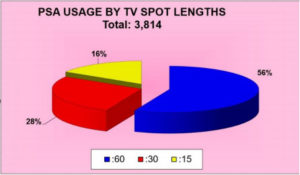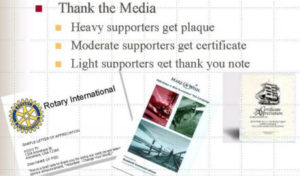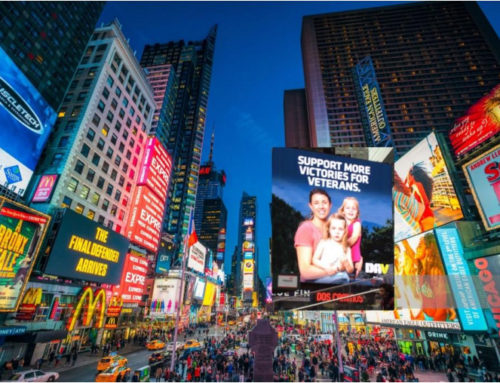Ten Helpful Tips for Creating Your Message
Our role as a PSA distributor begins when the master materials are delivered to us. Typically, we have nothing to do with the creative process, but if there is one thing we understand, it is PSA usage practices, as that is our stock in trade.
With that in mind, there are a number of things that producers should think about in the creative process that could have an immense impact on ultimate media usage and exposure. Before that, however, we have one very important suggestion: Do your homework. Before you type the very first word of copy…before you even think of a creative concept:
- Read everything you can about the type of messages the media uses.
- Learn what you can about the media mindset – the things the media considers when making the decision to use a particular PSA or not.
- Have a clear understanding of how the media wants PSAs delivered to them and how they are to be formatted.
We have made it somewhat easier for you via the various articles on our PSA Research Center where you can learn about what types of materials the media will use, including optimum spot lengths, and things to avoid in your PSA creative development: www.psaresearch.com/biboverall.html
Here you can learn about what types of materials the media will use, including optimum spot lengths, and things to avoid in your PSA creative development.
Other things to think about as you begin the creative process:
- Adopt a team approach. When producing your PSA, adopt a team approach by bringing all the people who will be involved in the campaign to the table in the planning stage.This might include the person who commissioned the campaign, the account team, if being done by an advertising agency, the producer, director and copywriters. This doesn’t mean writing copy by committee, which normally results in disaster. It means that those who will be involved in various executional aspects of the campaign should all understand the objectives, target audiences, timing, and call-to-action for the campaign BEFORE you start creating the message.
 Produce PSA materials for a broad media mix. Each medium has different strengths and weaknesses in terms of reaching your audience and stakeholders. Accordingly, you should adapt a multi-media approach, which includes TV, (broadcast and cable; national and local), radio, and out-of home.The latter category typically includes airport dioramas, transit and mall posters. How you develop your message for each of these media must be different, because the delivery platform for each is different. While TV PSAs will deliver the lion’s share of exposure, different media perform different functions, so you should think of the larger media universe.
Produce PSA materials for a broad media mix. Each medium has different strengths and weaknesses in terms of reaching your audience and stakeholders. Accordingly, you should adapt a multi-media approach, which includes TV, (broadcast and cable; national and local), radio, and out-of home.The latter category typically includes airport dioramas, transit and mall posters. How you develop your message for each of these media must be different, because the delivery platform for each is different. While TV PSAs will deliver the lion’s share of exposure, different media perform different functions, so you should think of the larger media universe. Keep your message simple. You have sixty seconds or less to deliver your message, and remember the audience will be doing other things when they see or hear your PSA. What many people think is the most famous PSA ever conceived – the Fried Egg TV spot produced by the Partnership for a Drug-Free America – used 12 words, an egg and a frying pan as their creative concept. However, once you saw it, you never forgot it. And, if you are preparing any messages for out-of home media, remember, less is more. You have about six seconds to register your message, so use clever, bold headlines and a minimum of body copy. The Outdoor Advertising Association of America has a Creative Testing Tool you can use to test your creative in terms of readability. Go to: https://specialreports.oaaa.org/creative-testing-tool-2/
Keep your message simple. You have sixty seconds or less to deliver your message, and remember the audience will be doing other things when they see or hear your PSA. What many people think is the most famous PSA ever conceived – the Fried Egg TV spot produced by the Partnership for a Drug-Free America – used 12 words, an egg and a frying pan as their creative concept. However, once you saw it, you never forgot it. And, if you are preparing any messages for out-of home media, remember, less is more. You have about six seconds to register your message, so use clever, bold headlines and a minimum of body copy. The Outdoor Advertising Association of America has a Creative Testing Tool you can use to test your creative in terms of readability. Go to: https://specialreports.oaaa.org/creative-testing-tool-2/ Provide message flexibility. PSA availability is a function of unsold media time and space – it is completely random in nature. Accordingly, you should offer the media maximum flexibility in terms of sizes and lengths. For TV, you spend tens of thousands of dollars for creating your message, so why not provide it to the media in different spot lengths to increase your chances of getting it aired?
Provide message flexibility. PSA availability is a function of unsold media time and space – it is completely random in nature. Accordingly, you should offer the media maximum flexibility in terms of sizes and lengths. For TV, you spend tens of thousands of dollars for creating your message, so why not provide it to the media in different spot lengths to increase your chances of getting it aired?- Embrace diversity. Produce PSAs to reach a variety of audiences; make it look like the multi-cultural society our country has become. Just so you will know how important this point is, in many cases, the person who decides if your PSA gets on the air will be a minority woman.
- Avoid controversy. The last thing any media organization wants to do is create controversy over a PSA they used. In fact, their main objective is to build greater audience share, not to turn away viewers, and listeners. If you represent issues such as gun control, abortion, or fringe religious issues, you may want to consider another way to disseminate your message, because it is unlikely the media is going to use it as a PSA.
- Recognize and capitalize on media strengths. The reason TV can be such a powerful medium is it offers full motion, sound and color, with the best PSAs using all three to maximum advantage. Talking heads rarely make good TV PSAs unless the person delivering the message is extremely compelling. For radio, you have to create theater of the mind via interesting voice-over copy and dramatic sound effects. For out-of-home, you must use very brief and powerful copy and graphics.
- Avoid any type of commercialization, which includes audio or visual references to any profit-seeking organization, including the use of logos or corporate spokespersons who are identified in their corporate role. TV networks and local stations have Clearance Directors who will undoubtedly catch any commercial plugs you may include in your PSAs, no matter how subtle they may be.
- Don’t compete against yourself. If you have a bunch of PSAs and decide to distribute them all at once, the chances are most of them will not get used. There is only so much time available, and typically the public service director will cherry pick your spots, using one or two and the rest will be wasted. Think about sending the others at another time and possibly doubling your exposure.
 Remember to Say Thank You! If a stranger came up to you and gave you five, ten or fifteen million dollars’ worth of cash, wouldn’t that be worth at least a thank-you note? Public service directors are just like the rest of us. They do not have to use your PSAs and when they do, the least you can do is to thank them for their support.
Remember to Say Thank You! If a stranger came up to you and gave you five, ten or fifteen million dollars’ worth of cash, wouldn’t that be worth at least a thank-you note? Public service directors are just like the rest of us. They do not have to use your PSAs and when they do, the least you can do is to thank them for their support.







Leave A Comment